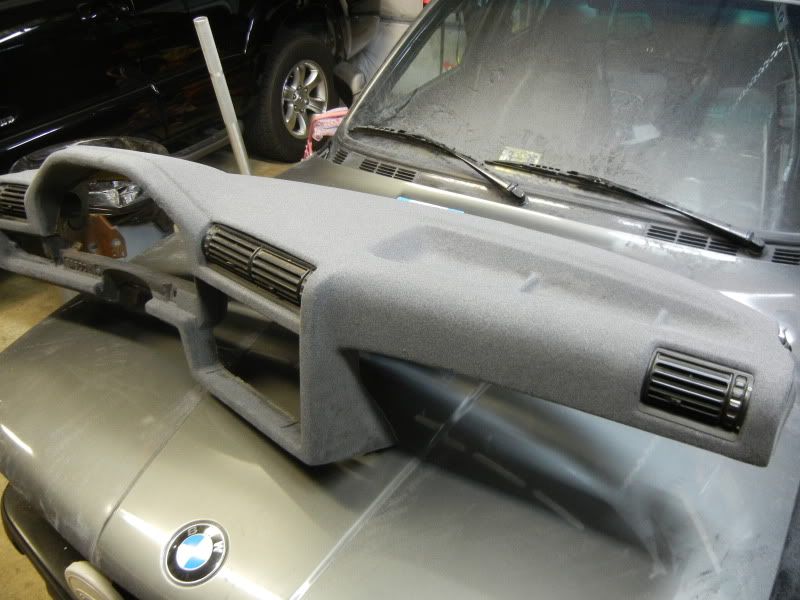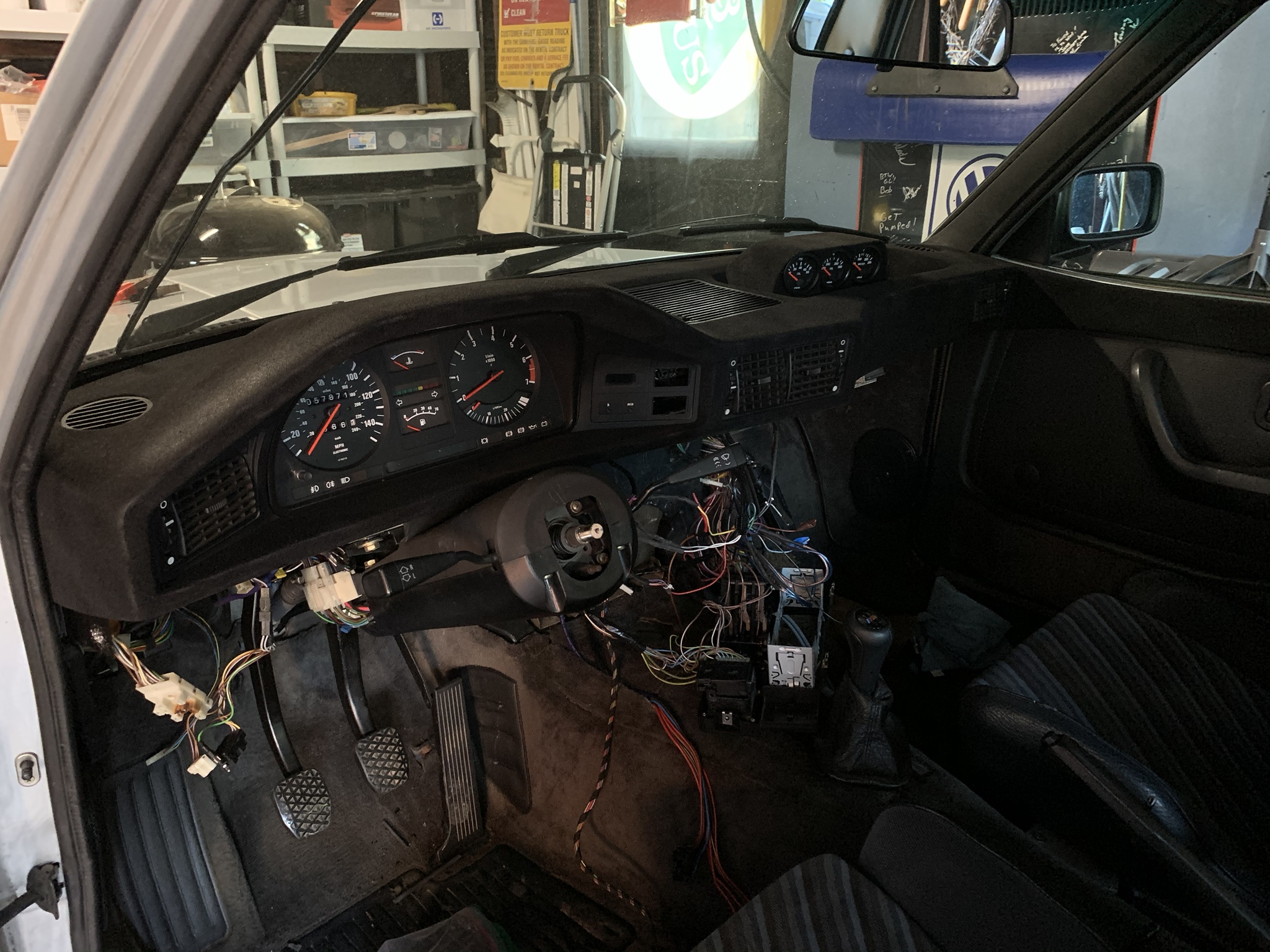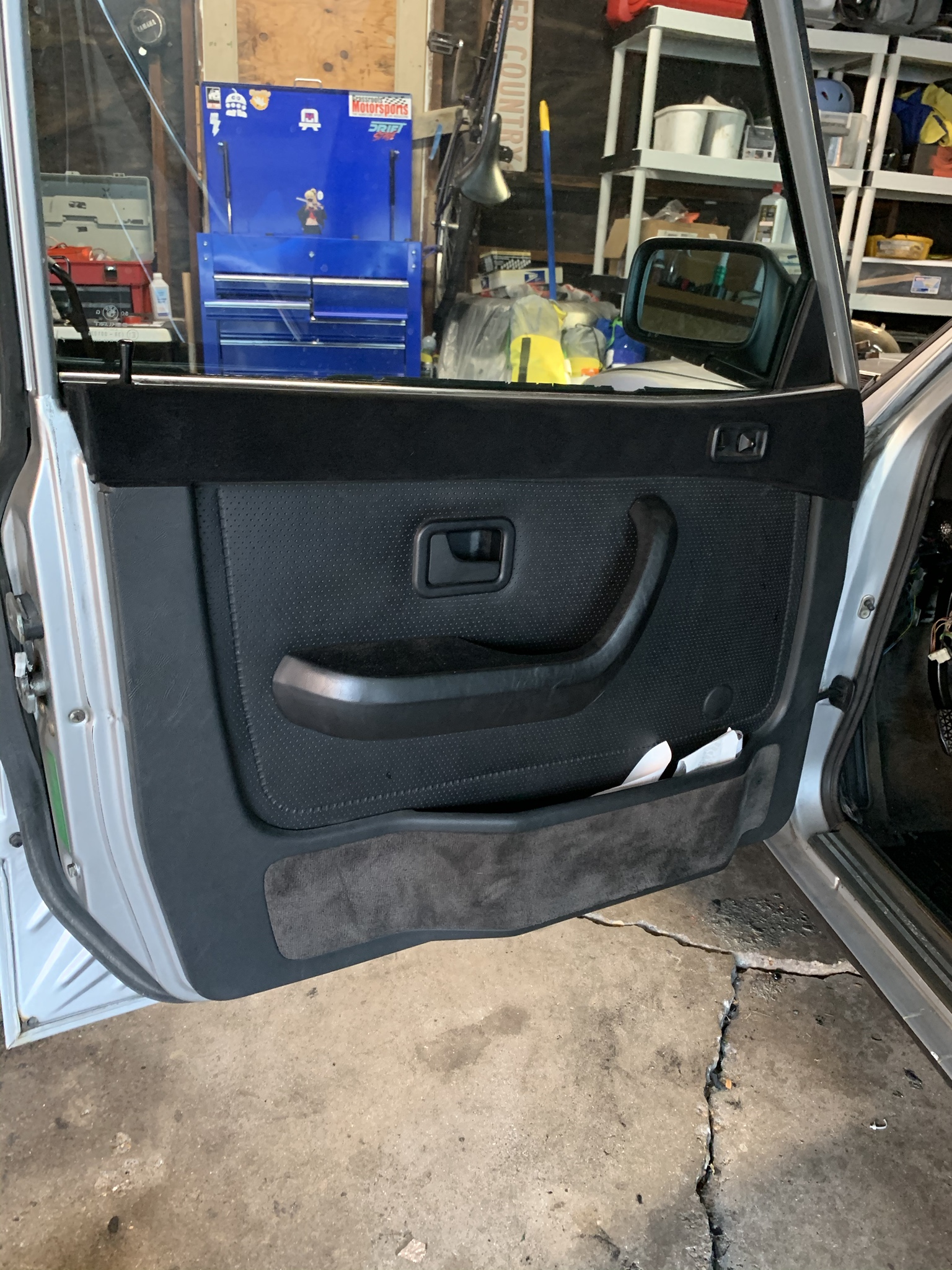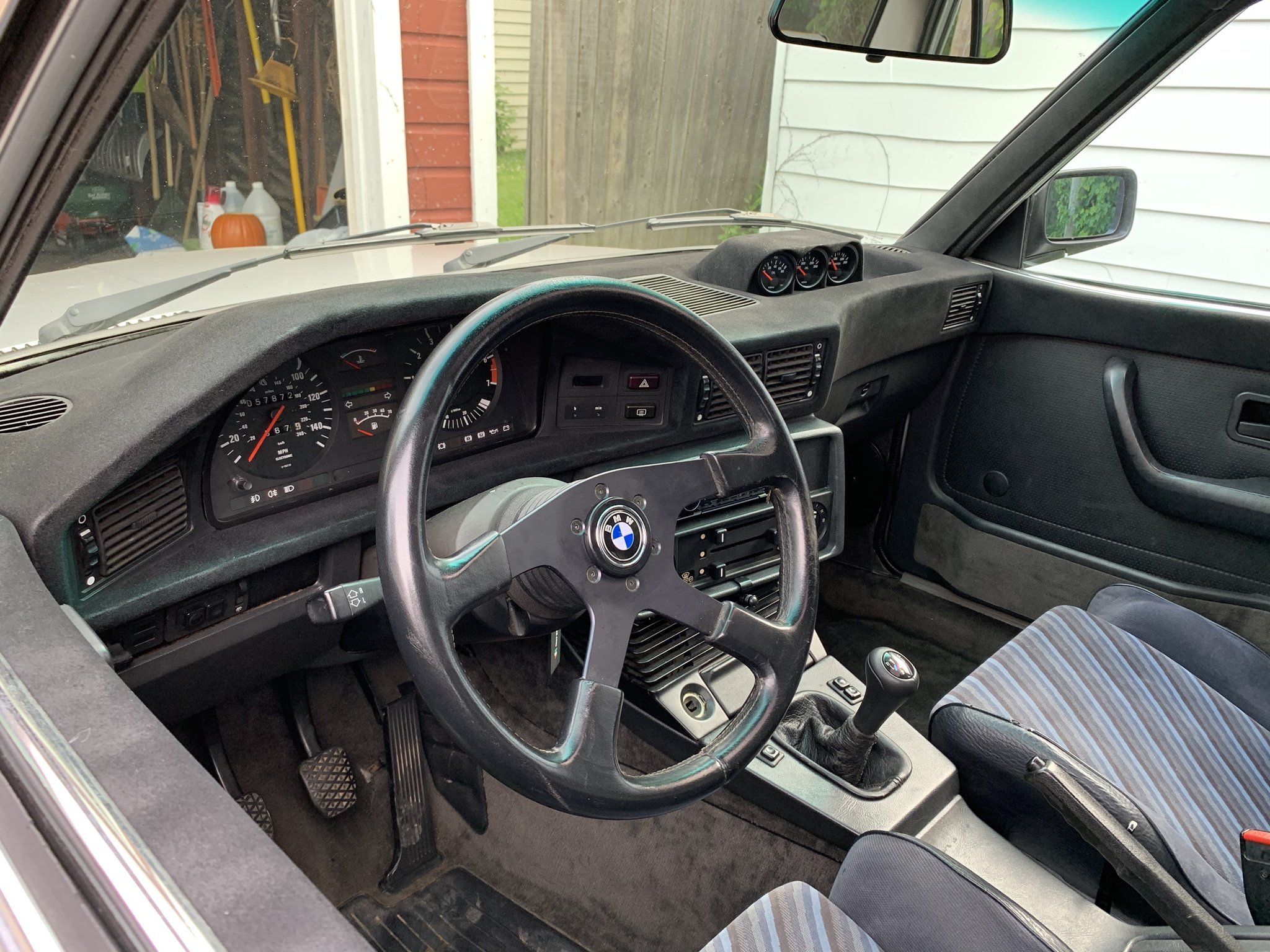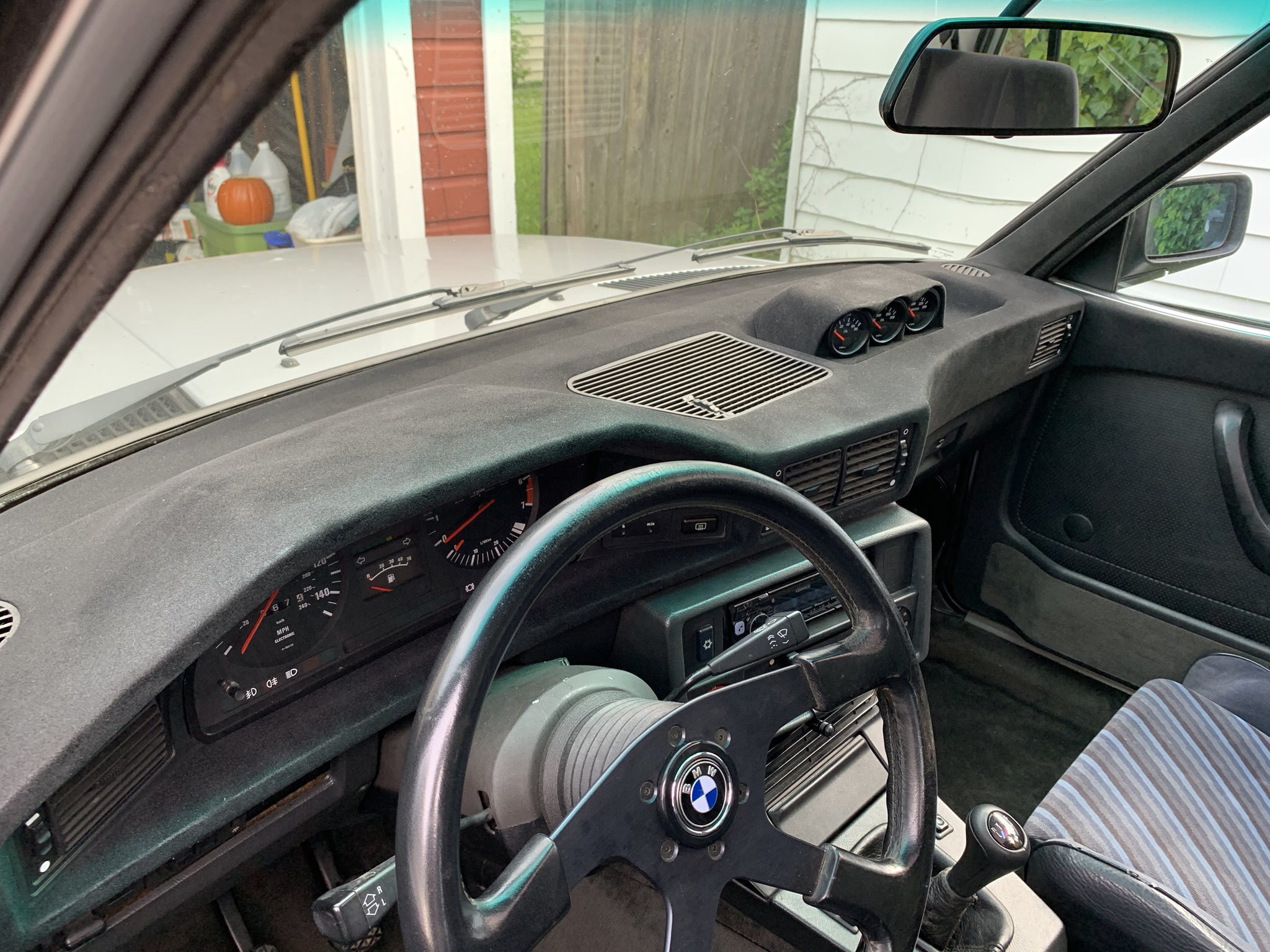My '85 Euro 535i's condition is somewhere in that awkward gulf between "rough" and "nice." It looks great from 20 feet and gets thumbs-up from passers-by in the know, but the flaws are apparent as you get up close and personal. As a Euro car, it's worth preserving and solid enough to enjoy as a driver and track car, but its past is checkered enough that it'll never deserve a true restoration. We'll call it "scruffy but decent."
That said, one flaw that particularly bothered the nut behind the wheel (me) was the dashboard. Given that I stare right at the thing every time I drive the car, the sun-dried vinyl that had baked to a sand-like texture and numerous deep cracks really started getting to me, especially as the rest of the interior is quite presentable. Even by E28 standards (and I've had three), this dash was in rough shape. This car hailed from sunny South Carolina before my ownership which is likely where most of the damage originated.
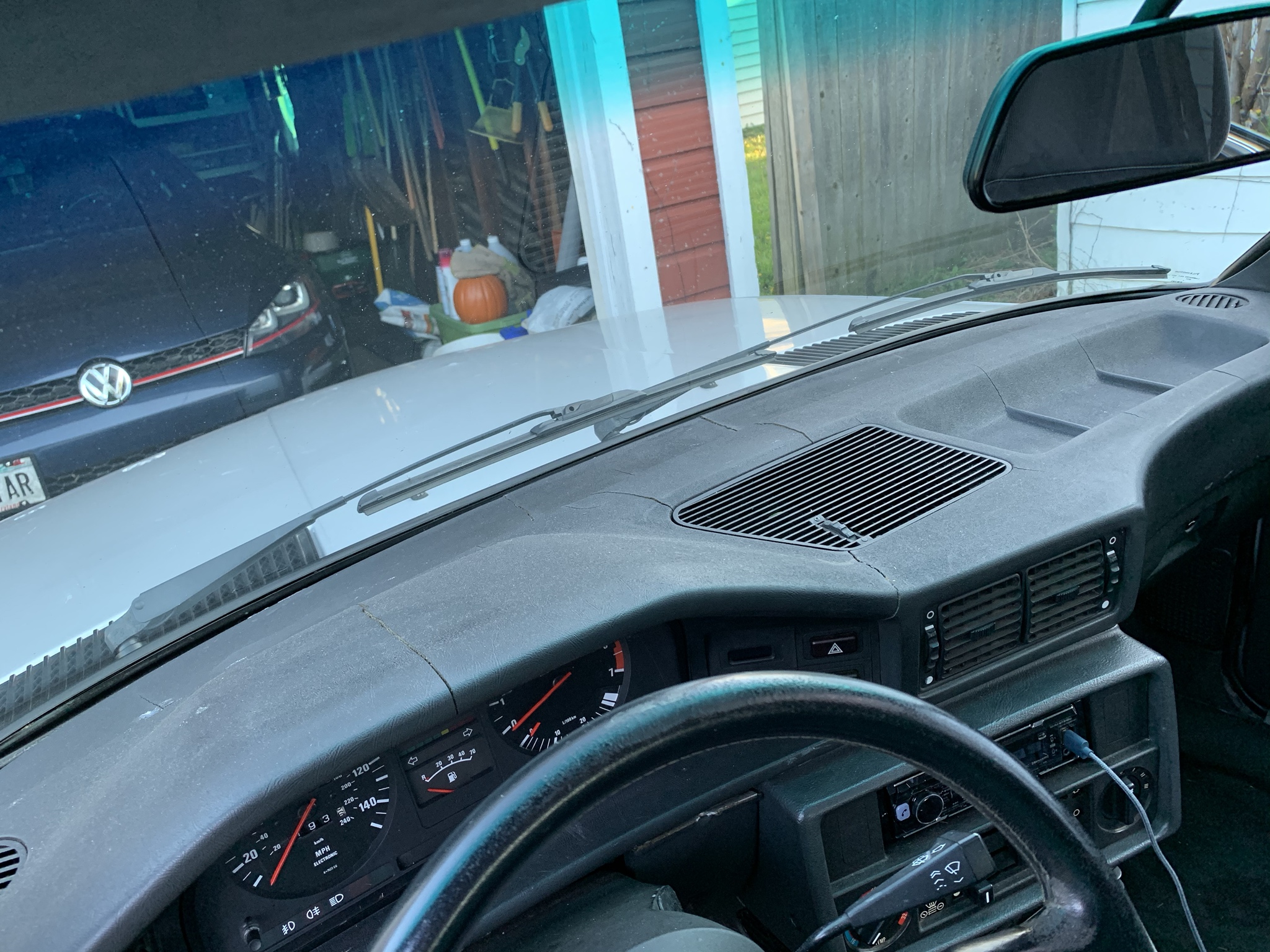
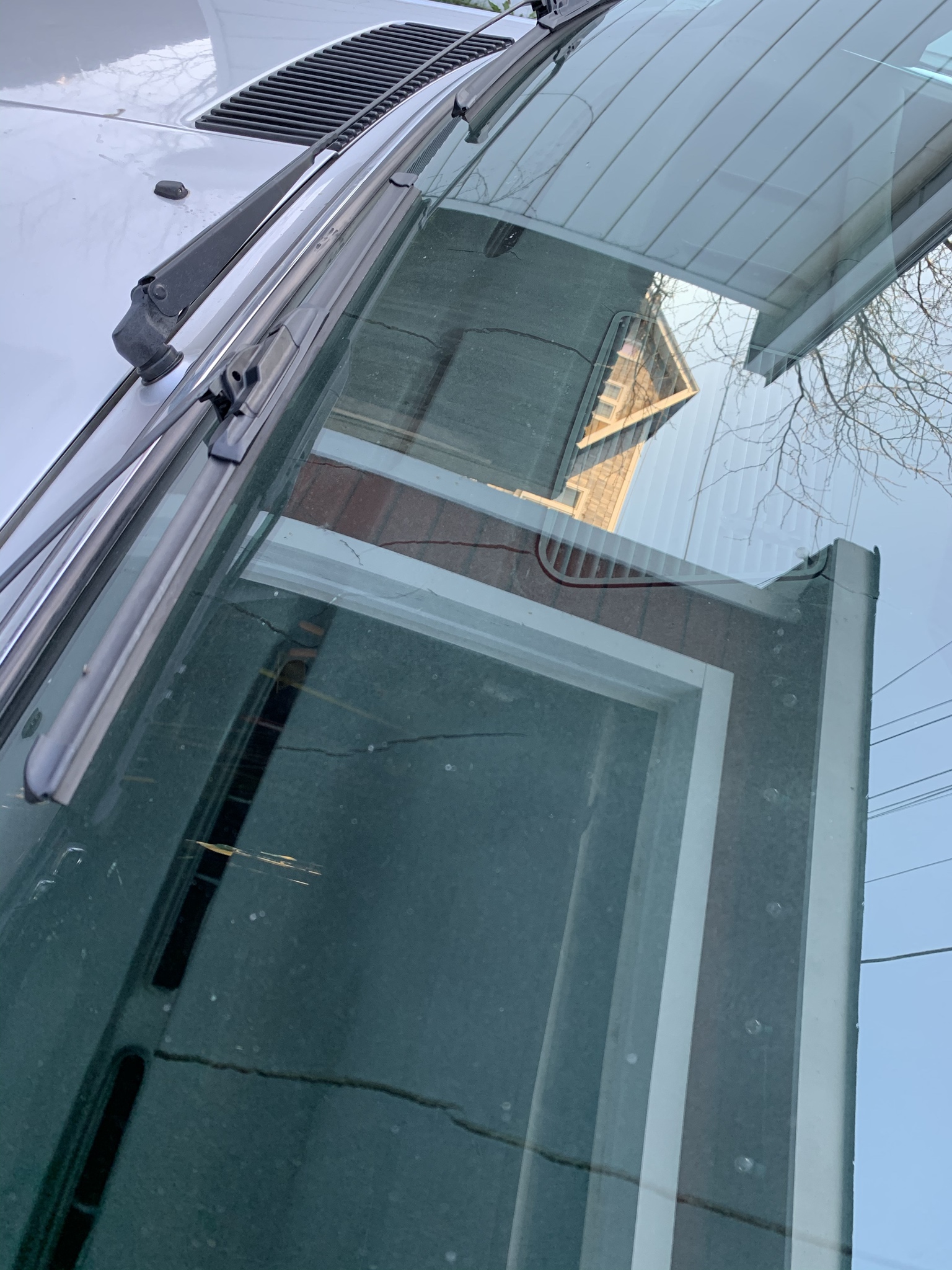
When I bought the car it had a horrible Coverlay dash cap installed that was sun-warped, fit like crap, rattled, etc. So that was a no-go. The carpet dash covers always struck me as a little too "car show at the local Burger King" for my taste, so those were out too. I would have settled for a "decent" dashboard with less faded vinyl and fewer cracks, but they're tough to find; browsing the classifieds here, people seem to throw them away if they're in anything less than 9/10 condition, and the price is skyrocketing on solid dashboards.
After evaluating my options, and realizing that I had nothing to lose but $100 and my time, I decided to take a leap of faith and try flocking it. To those unfamiliar with the process, flocking involves covering your dashboard with colored adhesive, and then spraying it with fine nylon fibers to give a matte, "fuzzy" finish that can be vacuumed. It is typically done on race cars to reduce windshield glare, but is becoming more popular as a DIY project to improve nasty old dashboards for minimal cost.
I had done a bunch of research online and found a few E30s with flocked dashes that looked pretty good, but no E28s. So I ordered up a flocking kit and got to work pulling the dash. I ordered this kit; I ended up using all of the fibers to do my dash and trim parts, but didn't even open the second container of adhesive. Were I to do it all over again, I'd just get the basic kit, and an extra bag of fibers. (Note: if you can set up your work area to reclaim your overspray fibers efficiently, you could probably get away with a single bag. But more on that later.)
I settled on black fibers because I'm not a monster. I didn't mind they charcoal grey fibers either from what I'd seen online, but they were a little light for my taste. If you're all about that sTaNc3_lYf3 or d0rift0 or whatever, maybe you'll choose purple or orange or something else hideous, I don't know. It's your life.
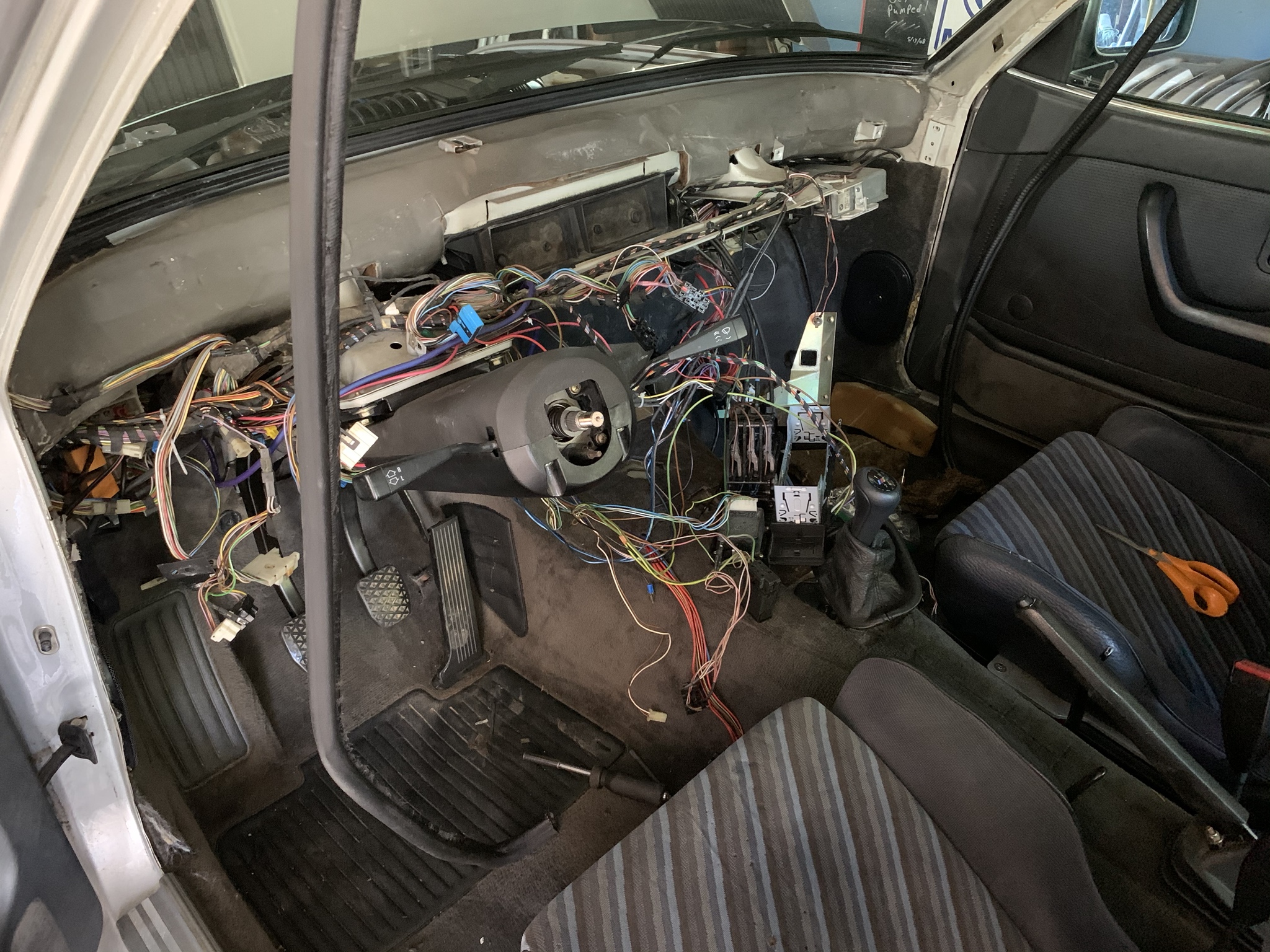
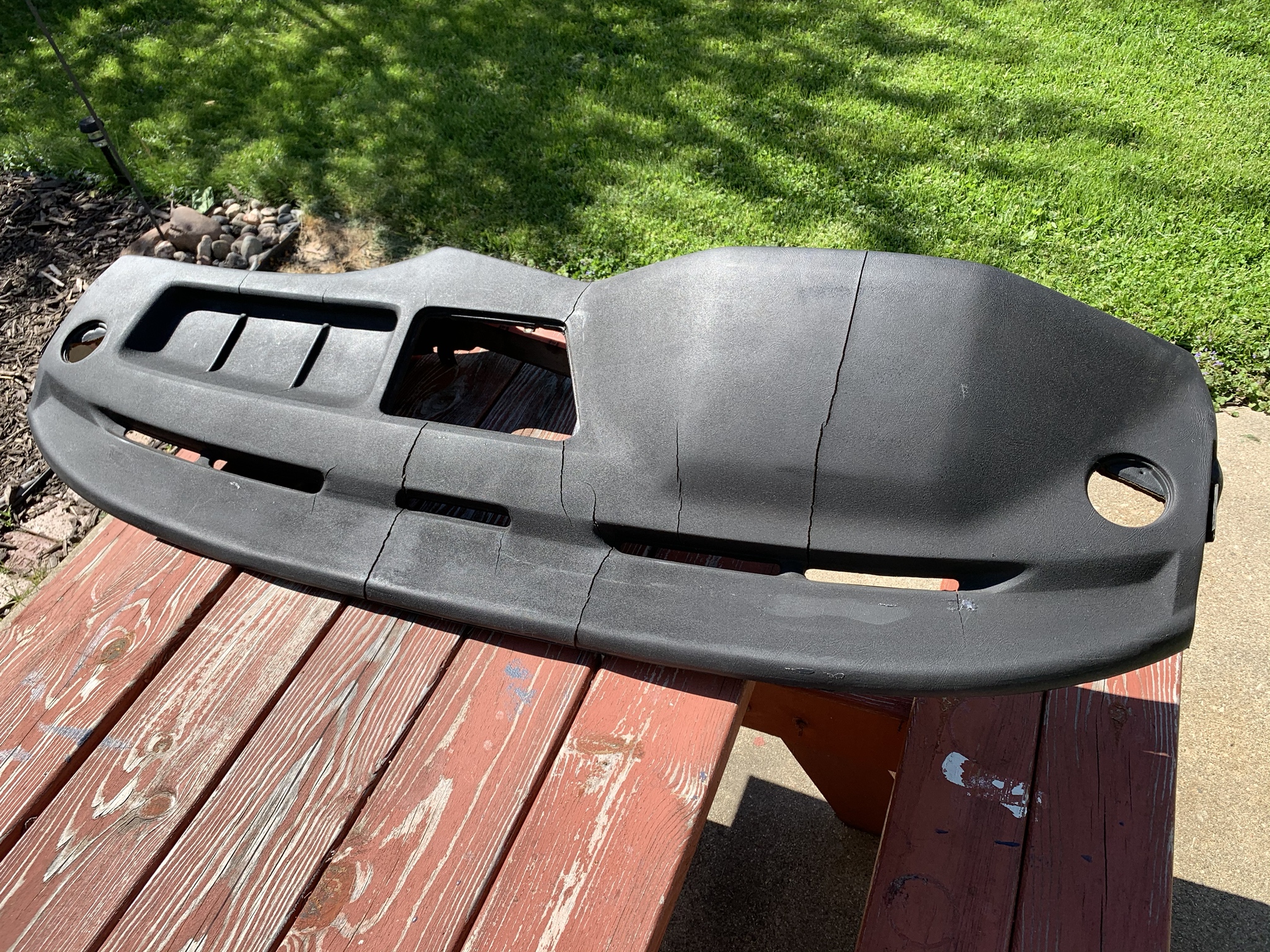
First things first: gotta fill those cracks. I did a bunch of research on what to use for this before I got started; the internet suggested everything from an expensive Bondo-like "padded dash filler" creme that got rather mediocre reviews, to baking soda and super glue (yes, really). Out of all the dash repair write-ups I could find online, the one that piqued my interest came from a GM G-body forum, of all places. The guy doing the repair used 3M Bumper Repair epoxy; he noted that it was an excellent choice as it retained flexibility after curing and didn't have a propensity for cracking. So I picked up three of the syringe kits from the local Advance Auto and got to work. (I later learned that you can buy it in bigger tubes and get more for your dollar, but oh well.)
I started by using a Dremel tool with a V-shaped bit to groove all of the cracks; this creates more surface area for the filler to grab, and eliminates the high spots around the crack. I also drilled the ends of each crack to eliminate any tension. Then I liberally applied the compound. I used all three syringes for my shitty dash and ended up grabbing a fourth for touch-ups; your mileage may vary.
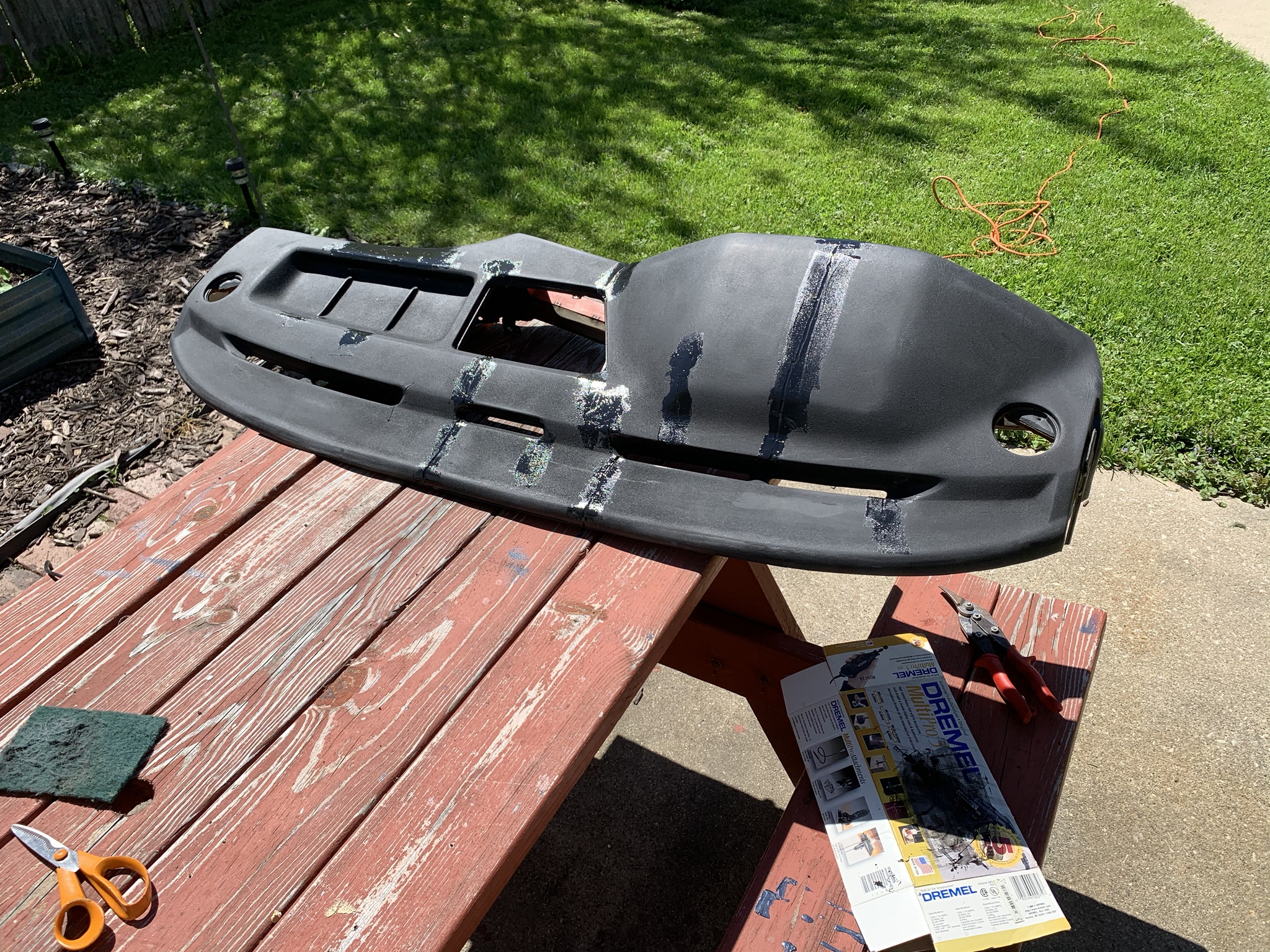
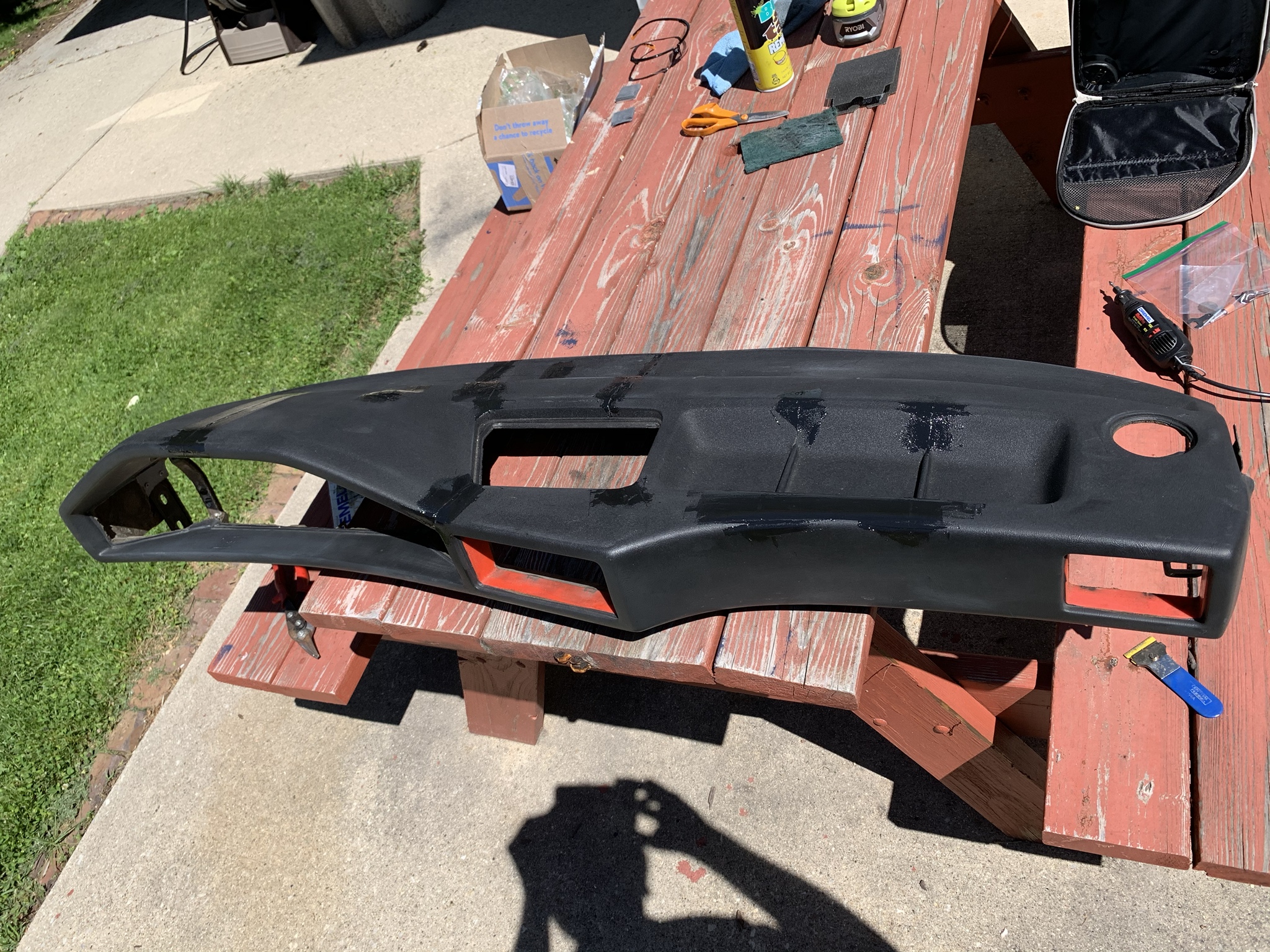
I let it cure for a few days, then went to town with the palm sander and some 120 grit (don't even waste your time trying to do it by hand). I was unsure how well the flocking would cover up imperfections, so I really went to town; it turned out that the flocking adhesive does a pretty good job of leveling out imperfections, though. I exhausted most of my effort on the spots visible from the driver's seat; a few areas around the vents were less-than-perfect, but after four hours of sanding, I was at the "good enough" stage.
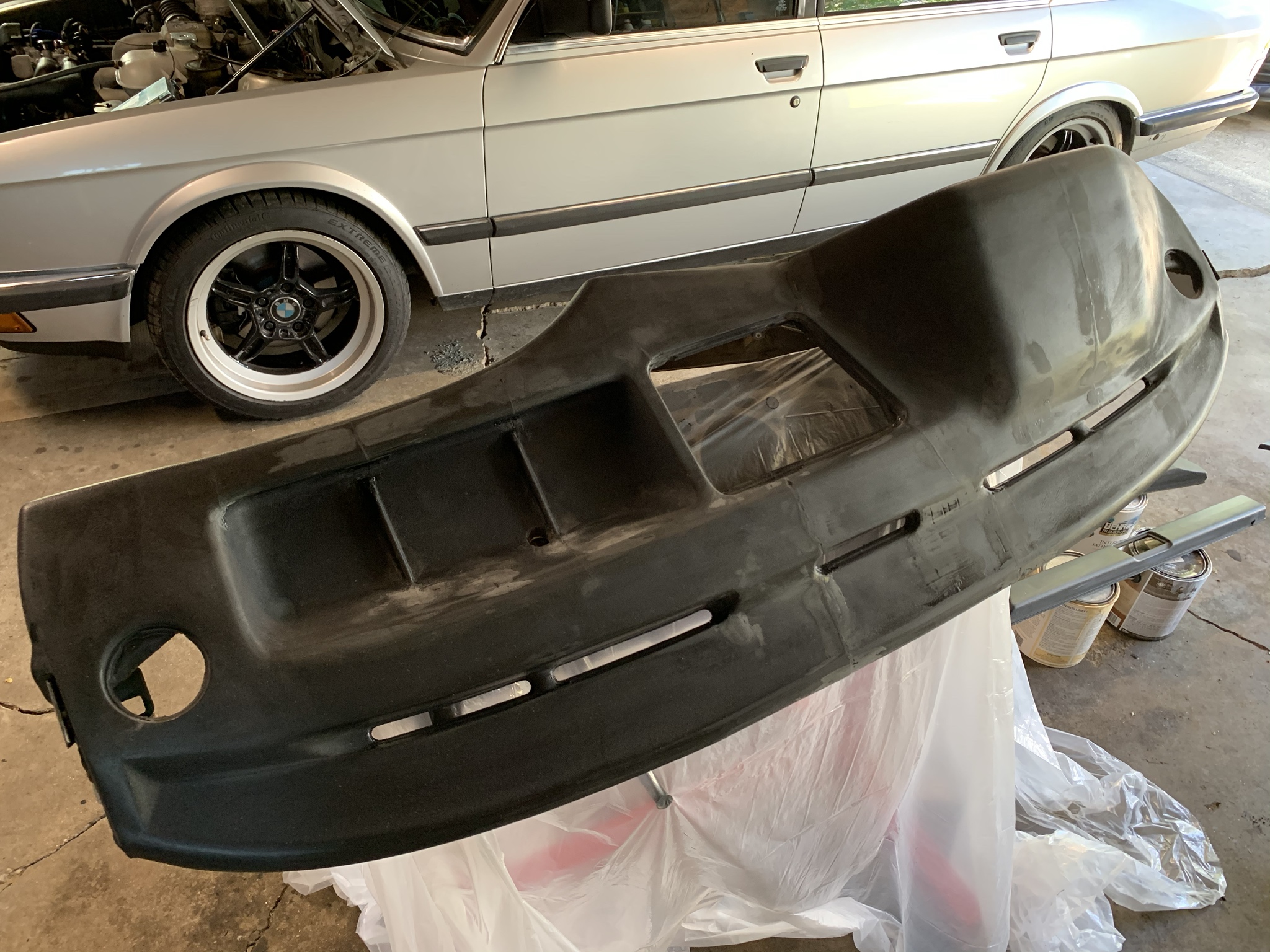
Then came the moment of truth: the flocking. I did the dash, along with my BMP Design gauge hood; I also did the upper door trims to add some visual consistency to the interior. This procedure is written up dozens of times all over the internet, so I'm not going to repeat it verbatim, but I'll share a few things I learned:
- Sorry for the lack of in-progress pics. The adhesive has a 10-15 minute working time, so once you start laying it down, you gotta BOOGIE or it'll cure before you get the fibers down.
- Unless you can set up a Dexter-like work space, you will end up with the fibers EVERYWHERE. Wear a mask, at minimum.
- Of the two bags of fibers I had, one of them pretty much ended up on the floor as overspray. It's hard to find a container big enough to catch excess when working on something as big as an E28 dash, but if you can, you can collect and re-use them as long as they're not contaminated.
- I didn’t even open the second can of glue, as noted earlier. One can is more than enough to do any work you would need to. You will definitely want at least two bags of fibers though.
- Work inside, in an enclosed area. If you try it outdoors, not only will the sun reduce the adhesive's already-very-fast cure time, but you will almost definitely end up with bugs and grass blades and shit in your flock.
- An extremely well-lit workspace is a big help; the adhesive is glossy and the fibers are not, so some good light can show you where more flock is required as you work on coating your parts.
After about an hour of making a huge mess, I closed my garage and let everything sit overnight. The rule of thumb is 12-24 hours to set before you can touch or move the parts, and 72 hours-1 week before they're "ready" and can be vacuumed/hit with compressed air/installed.
This morning (~18 hours later), I went out to do some cleanup. I couldn't resist rolling the dash out into the sun to see how it turned out:
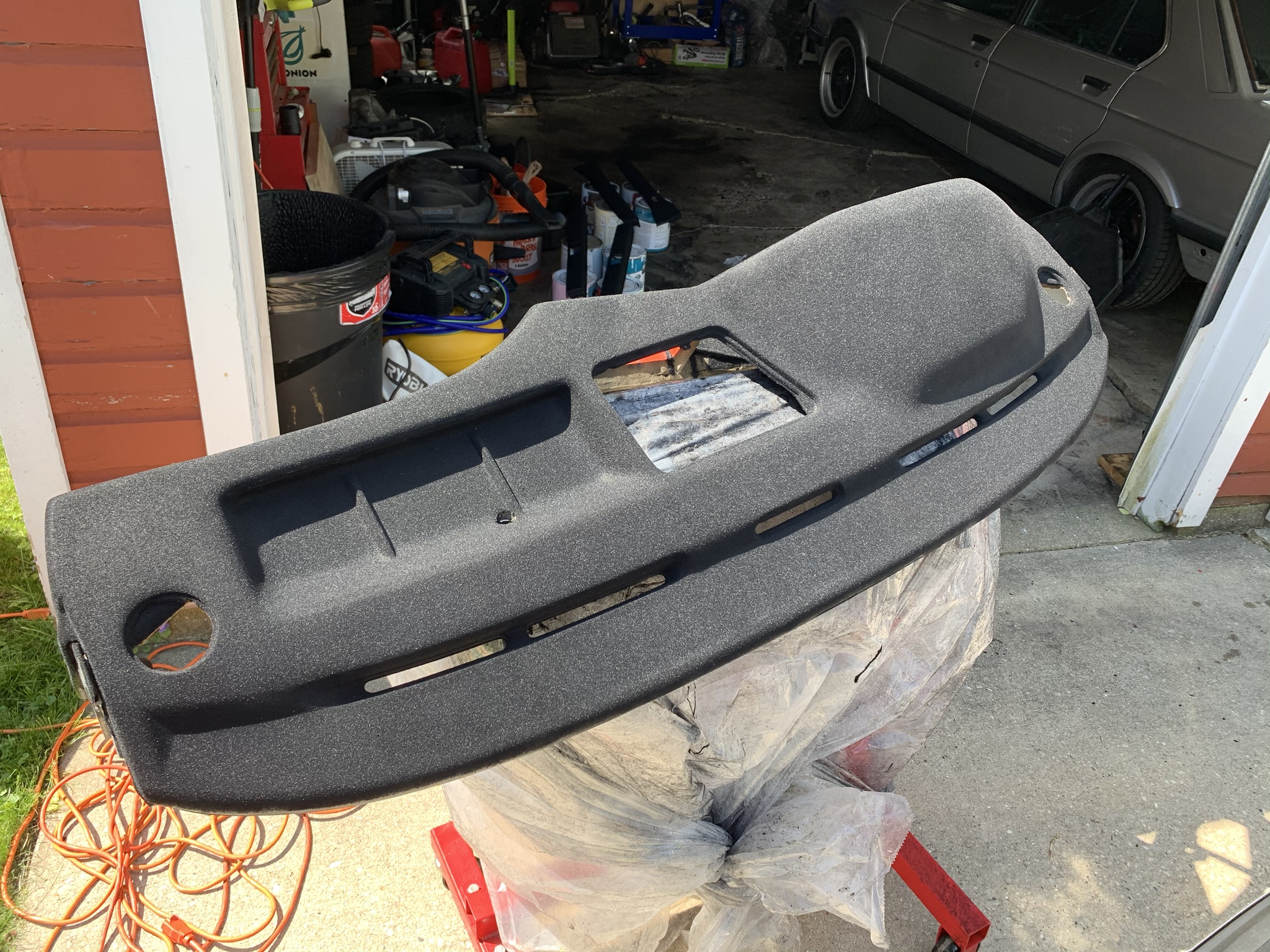

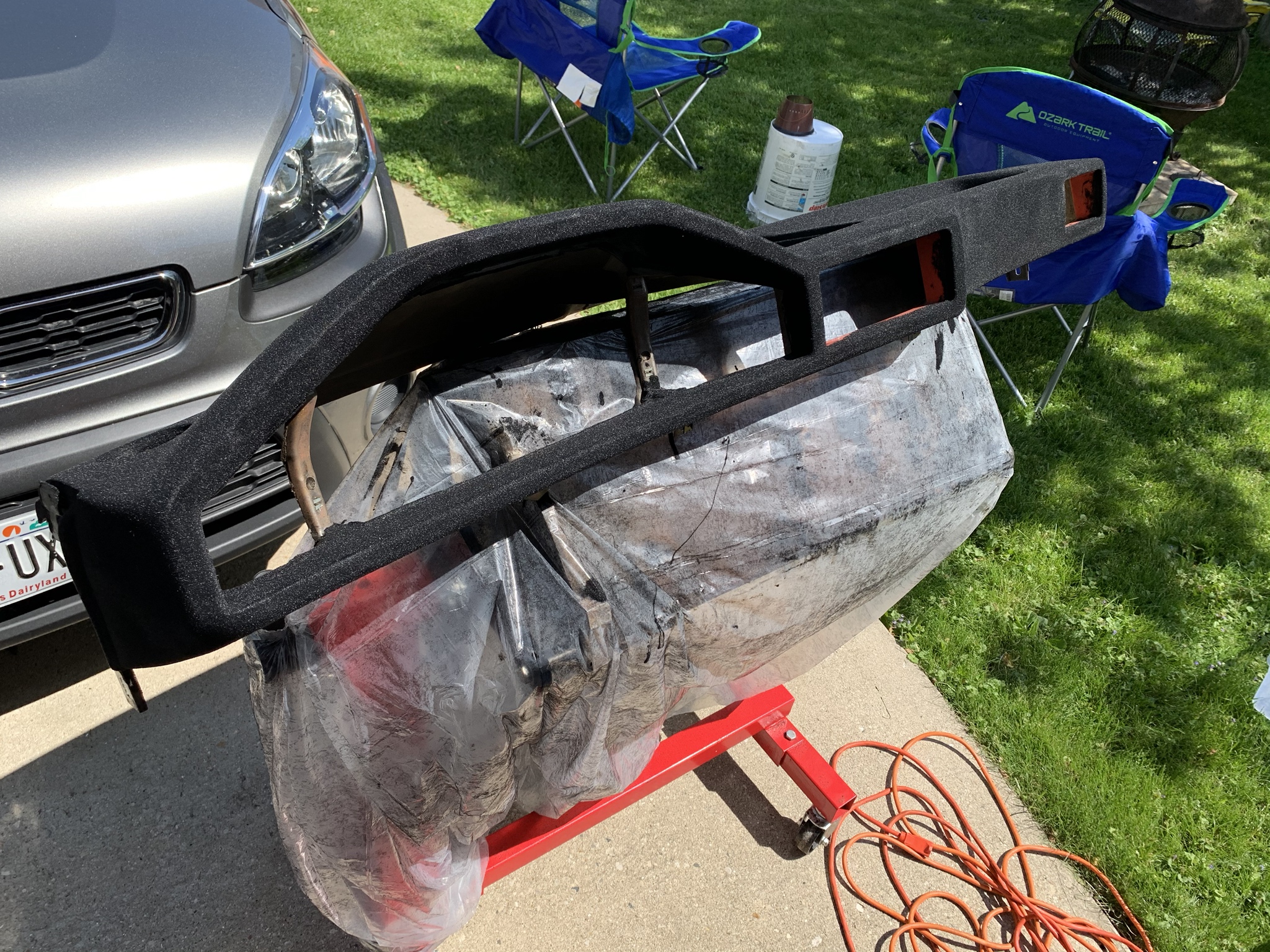
And for posterity, the other parts:
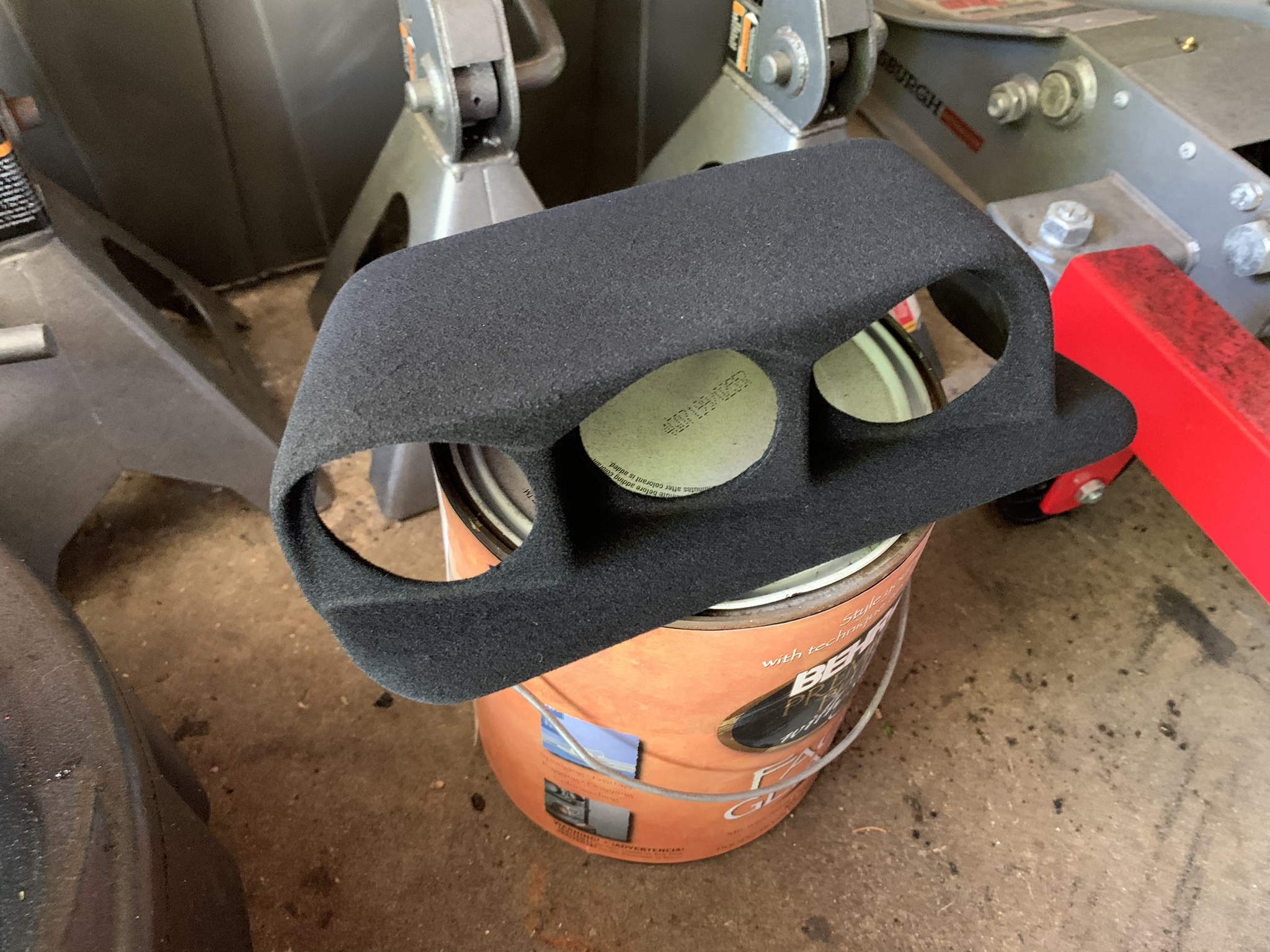
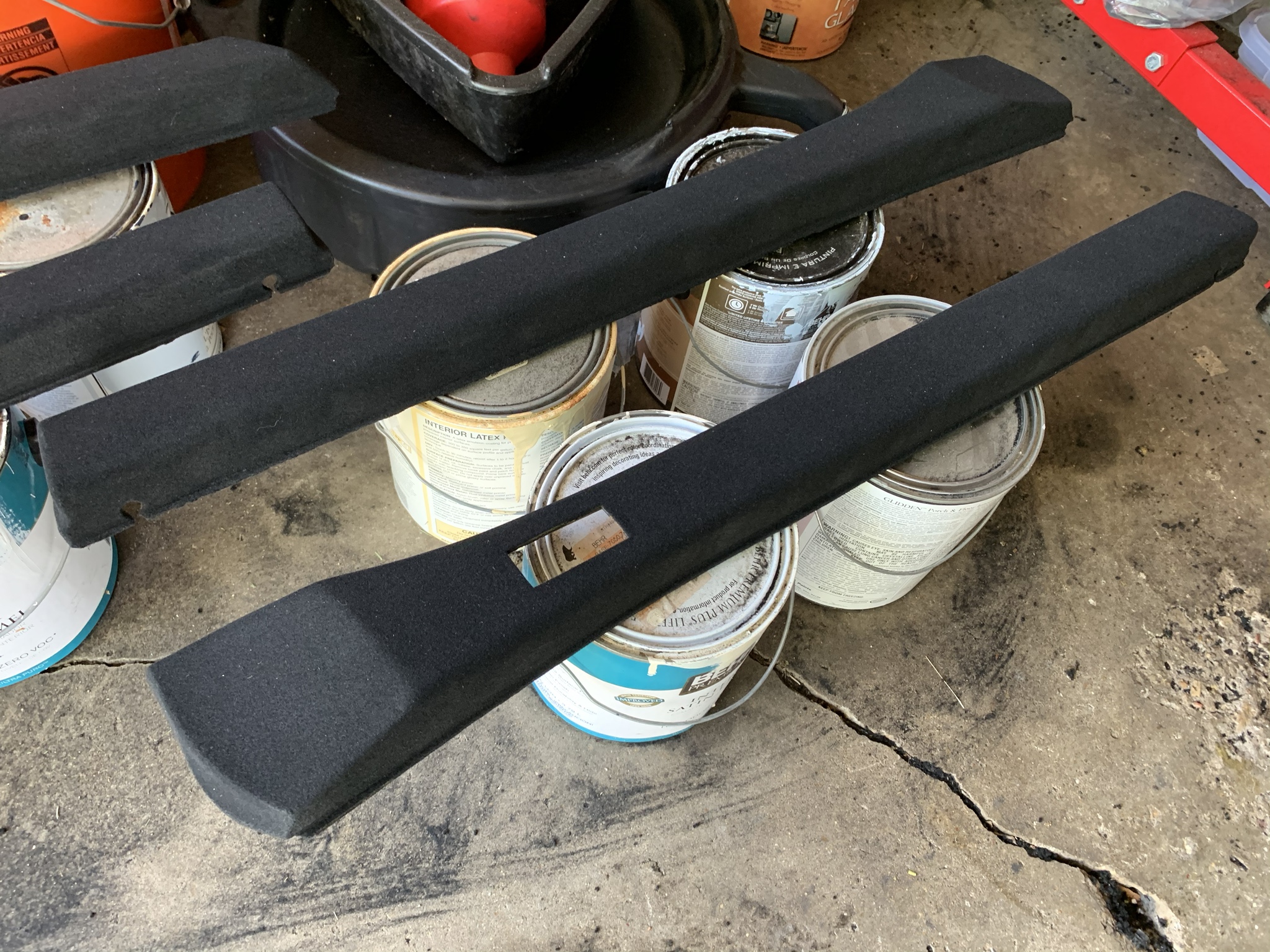
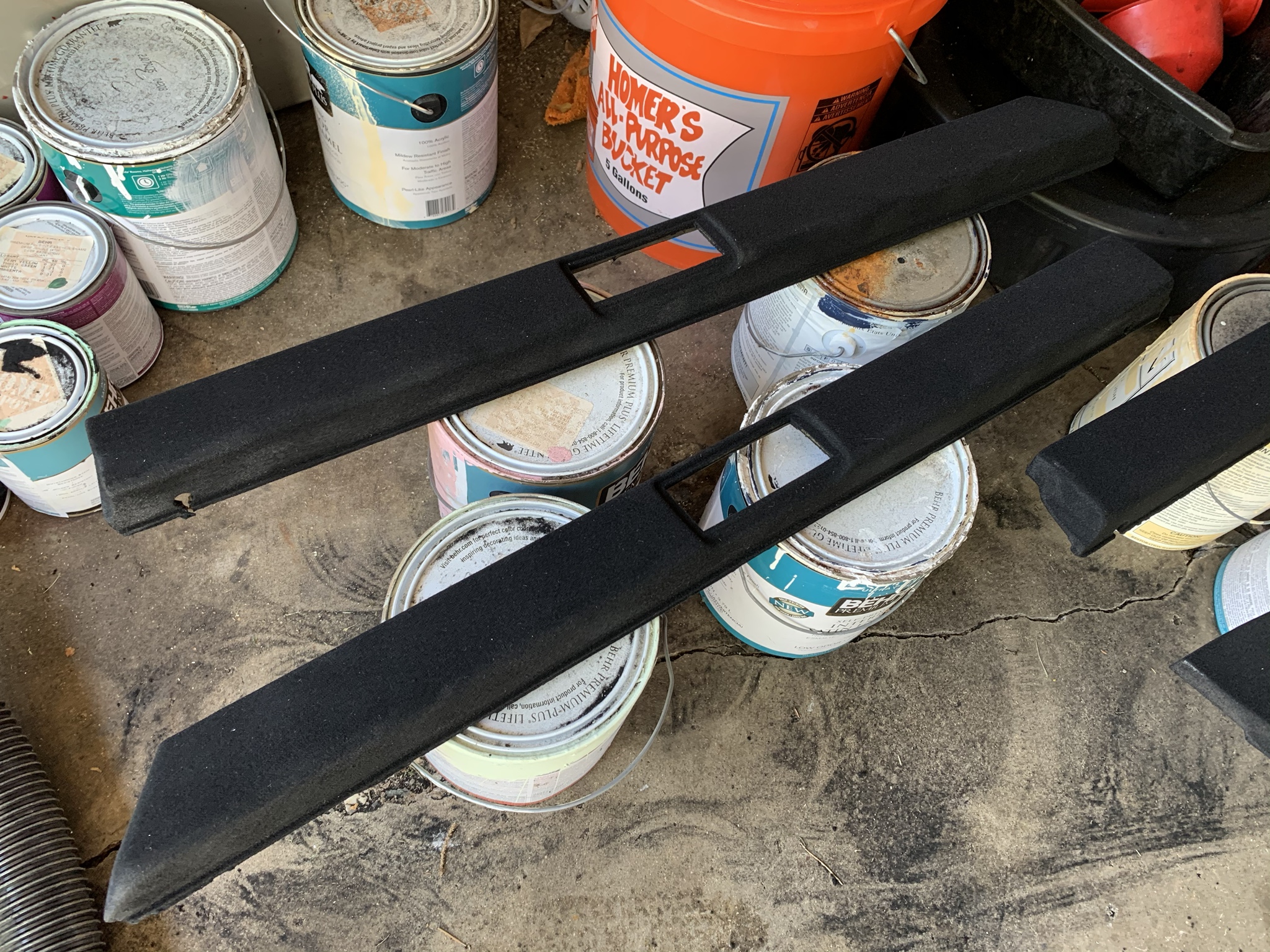
So far, so good! Now I get to let the parts sit for the week to fully cure. Huzzah.
Check back this time next week to see what it all looks like in the car.



